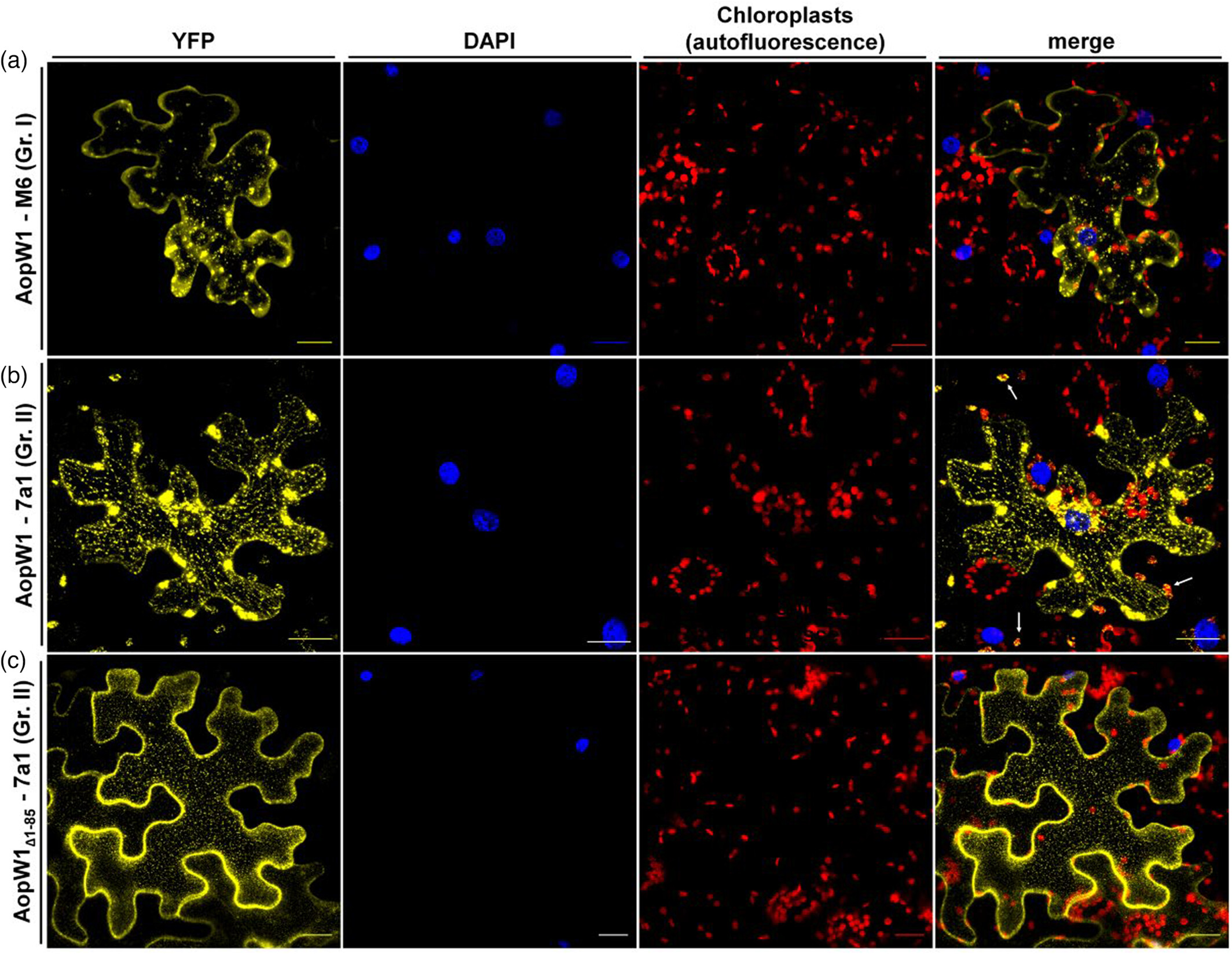Natural variation in a short region of the Acidovorax citrulli type III-secreted effector AopW1 is associated with differences in cytotoxicity and host adaptation.
Abstract:
Bacterial fruit blotch, caused by Acidovorax citrulli, is a serious disease of melon and watermelon. The strains of the pathogen belong to two major genetic groups: group I strains are strongly associated with melon, while group II strains are more aggressive on watermelon. A. citrulli secretes many protein effectors to the host cell via the type III secretion system. Here we characterized AopW1, an effector that shares similarity to the actin cytoskeleton-disrupting effector HopW1 of Pseudomonas syringae and with effectors from other plant-pathogenic bacterial species. AopW1 has a highly variable region (HVR) within amino acid positions 147 to 192, showing 14 amino acid differences between group I and II variants. We show that group I AopW1 is more toxic to yeast and Nicotiana benthamiana cells than group II AopW1, having stronger actin filament disruption activity, and increased ability to induce cell death and reduce callose deposition. We further demonstrated the importance of some amino acid positions within the HVR for AopW1 cytotoxicity. Cellular analyses revealed that AopW1 also localizes to the endoplasmic reticulum, chloroplasts, and plant endosomes. We also show that overexpression of the endosome-associated protein EHD1 attenuates AopW1-induced cell death and increases defense responses. Finally, we show that sequence variation in AopW1 plays a significant role in the adaptation of group I and II strains to their preferred hosts, melon and watermelon, respectively. This study provides new insights into the HopW1 family of bacterial effectors and provides first evidence on the involvement of EHD1 in response to biotic stress.
Read the full article here: https://doi.org/10.1111/tpj.16507
